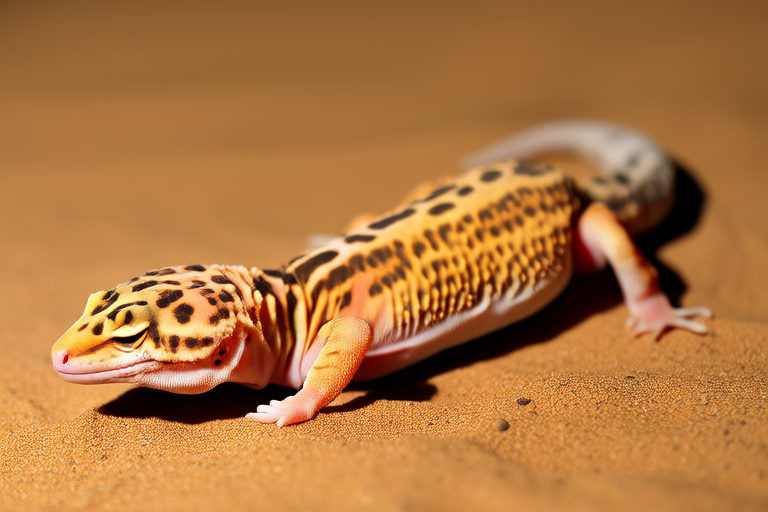Top 10 Secrets Every Leopard Gecko Owner Should Know
Leopard geckos are one of the most popular reptiles among pet enthusiasts due to their docile nature, ease of care, and vibrant appearance. However, owning a leopard gecko comes with responsibilities that extend beyond providing food and water. This article delves into ten secrets every leopard gecko owner should know to ensure their pet’s well-being and longevity.
1. Diet: The Foundation of Health
The diet of your leopard gecko is crucial for its overall health. These geckos are insectivores, meaning they primarily eat insects. A balanced diet typically includes crickets, mealworms, and wax worms. It’s important to gut-load these insects with nutritious foods before feeding them to your gecko. Gut-loading involves feeding the insects a variety of vegetables and fruits rich in vitamins and minerals. Additionally, dusting the insects with calcium and vitamin D3 supplements helps prevent metabolic bone disease, a common ailment in geckos.
2. Habitat Setup: Creating a Comfortable Home
A well-designed habitat is essential for the happiness and health of your leopard gecko. Start by choosing an appropriate enclosure size—adult geckos require at least a 20-gallon tank. Ensure the tank has secure ventilation to allow airflow but prevent escapes. Use a secure lid or mesh top to keep your gecko inside. Inside the tank, provide hiding spots like caves or tunnels where your gecko can retreat for privacy. A variety of substrates are available, from paper towels and reptile carpet to coconut fiber and sand. For beginners, paper towels or reptile carpet are recommended as they are easy to clean and less likely to cause impaction.
3. Temperature Control: Vital for Metabolism
Maintaining the correct temperature gradient within the enclosure is critical. Leopard geckos are ectothermic, meaning they rely on external heat sources to regulate their body temperature. Install a heat mat or under-tank heater on one side of the tank to create a warm basking area. The ideal temperature range is between 88°F (31°C) and 90°F (32°C). On the cooler side of the tank, temperatures should drop to around 75°F (24°C) during the day, mimicking the natural nighttime temperature drop. Always use a reliable thermometer to monitor these temperatures accurately.
4. Humidity Management: Balancing Moisture
While leopard geckos prefer dry environments, maintaining a moderate level of humidity is necessary for their health. Aim for humidity levels between 30% and 40%. To achieve this, you can mist the tank lightly once or twice a week, especially near the cool end of the enclosure. This encourages shedding and ensures that your gecko stays hydrated. Avoid over-misting, as excessive moisture can lead to respiratory infections.
5. Substrate Choices: Safe and Clean
The substrate you choose for your leopard gecko’s enclosure plays a significant role in their health. As mentioned earlier, paper towels or reptile carpet are excellent choices for beginners because they are easy to clean and pose no risk of ingestion leading to impaction. If you opt for a more natural look, consider using coconut fiber or orchid bark. Avoid loose substrates like sand or gravel, as these can be ingested and cause serious health issues.
6. Cleaning Routines: Maintaining Hygiene
A clean environment is vital for preventing illnesses. Spot-clean the enclosure daily by removing any uneaten food or waste. Once a week, perform a thorough cleaning of the entire enclosure. Remove all decorations, substrate, and accessories, then wash them with a mild reptile-safe disinfectant. Rinse everything thoroughly and let it dry completely before returning it to the tank. Regular cleaning helps maintain hygiene and prevents the buildup of harmful bacteria.
7. Health Monitoring: Early Detection of Issues
Regularly observing your leopard gecko allows you to catch potential health issues early. Signs of a healthy gecko include clear eyes, firm skin, active behavior, and regular eating habits. Look out for unusual symptoms such as lethargy, swollen limbs, difficulty shedding, or changes in appetite. If you notice any concerning signs, consult a veterinarian specializing in reptiles. Early intervention can often prevent minor issues from becoming severe problems.
8. Common Behaviors: Understanding Your Gecko
Understanding your leopard gecko’s behaviors can help you provide better care. Leopard geckos are generally nocturnal, so they will be most active at night. They may also exhibit behaviors like tail-waving when threatened or excited. Another common behavior is “waving,” where they raise one front leg slowly. This is usually a sign of submission or stress. Familiarizing yourself with these behaviors can help you respond appropriately and reduce stress for your gecko.
9. Breeding Insights: For Advanced Owners
If you’re interested in breeding leopard geckos, there are several factors to consider. Males and females can be housed together, but it’s important to have at least two females per male to prevent aggression. Provide ample space and hiding spots to reduce stress. Before attempting to breed, ensure both males and females are in good health and reach sexual maturity, which occurs around 12 to 18 months of age. Proper nutrition and environmental conditions are crucial for successful breeding. Consult resources or experienced breeders for detailed guidance on breeding techniques and incubation processes.
10. Signs of Illness: Knowing When to Seek Help
Recognizing the signs of illness in your leopard gecko is crucial for prompt treatment. Common indicators include weight loss, lethargy, swelling, and difficulty breathing. Other red flags include irregular shedding, open-mouth breathing, and loss of appetite. If you suspect your gecko is ill, isolate it from other pets and contact a veterinarian specializing in reptiles immediately. Early diagnosis and treatment can significantly improve recovery chances.
Owning a leopard gecko is a rewarding experience filled with joy and responsibility. By understanding and implementing these ten secrets, you can provide your gecko with the best possible care, ensuring a long and healthy life. Whether you’re a first-time owner or an experienced keeper, these tips will enhance your relationship with your pet and contribute to its overall well-being.
